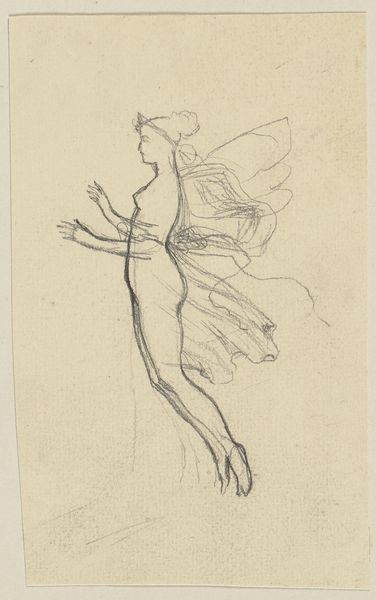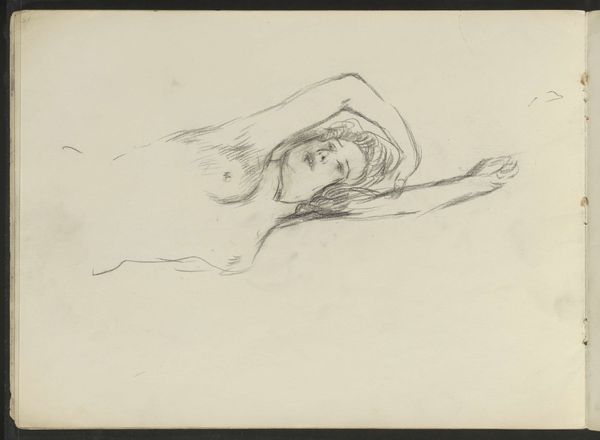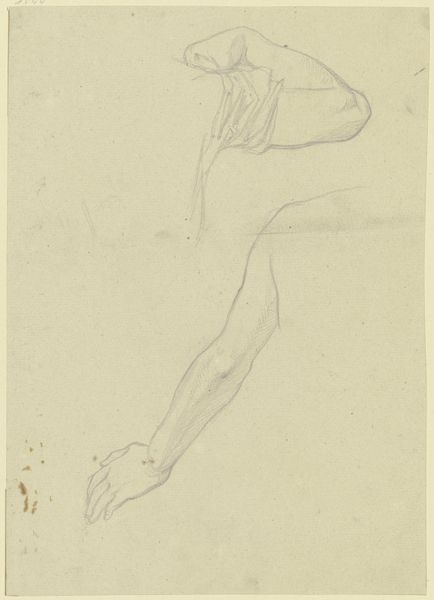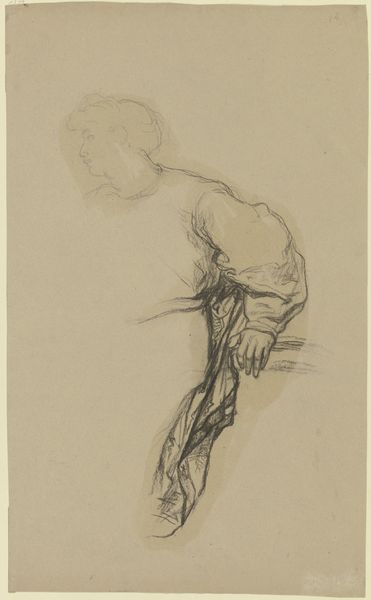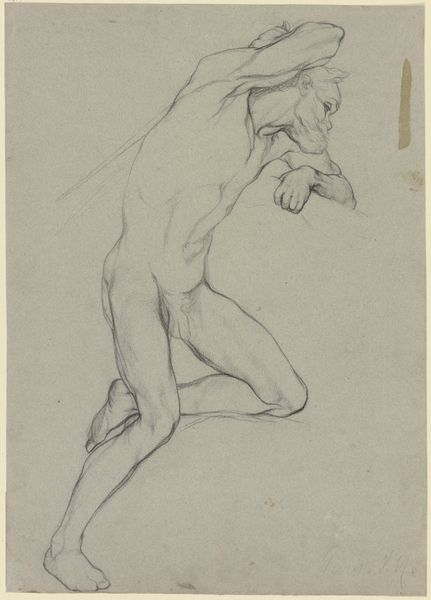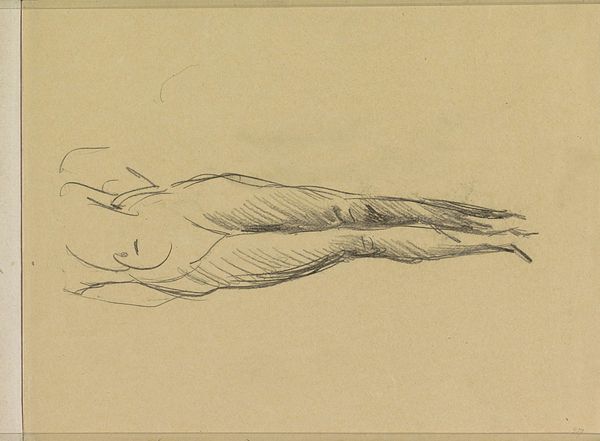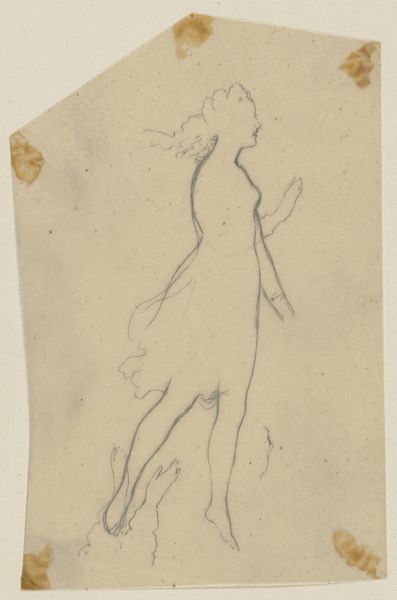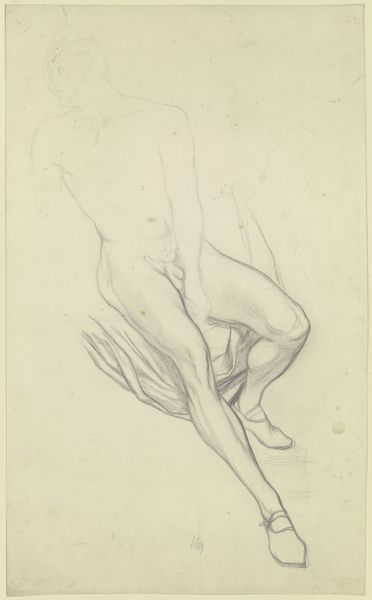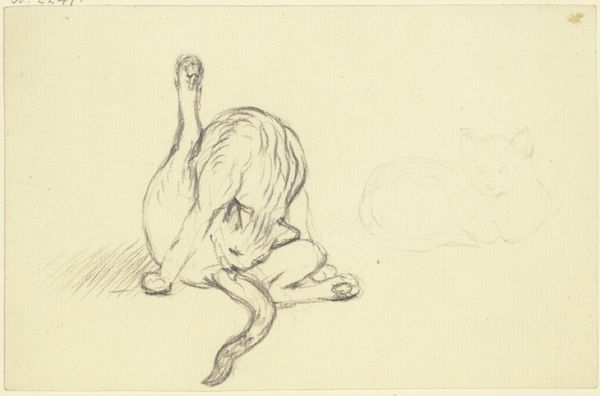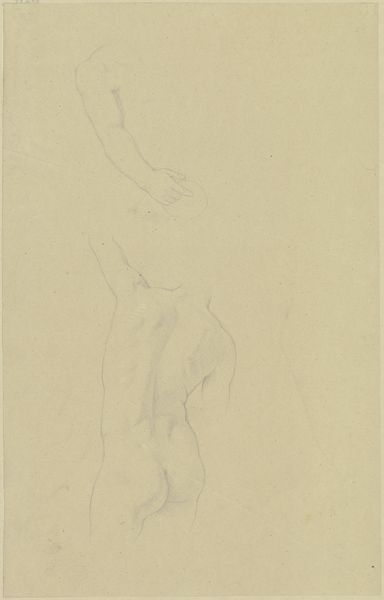
drawing, paper
#
drawing
#
amateur sketch
#
light pencil work
#
16_19th-century
#
pencil sketch
#
incomplete sketchy
#
paper
#
german
#
pencil drawing
#
ink drawing experimentation
#
sketchbook drawing
#
portrait drawing
#
pencil work
#
initial sketch
Copyright: Public Domain
Curator: Here we have "Head and Arms of Julia from Romeo and Juliet", a drawing made circa 1869-1871 by Victor Müller, now housed here at the Städel Museum. It is executed in pencil on paper. What are your first impressions? Editor: There's a distinct vulnerability in this sketch. The lightness of the pencil lines almost feels like a veil over Julia, a sense of her fleeting, ephemeral nature. Curator: It’s interesting to consider this work in relation to the broader artistic climate of the late 19th century. Müller was part of a generation grappling with academic traditions while looking for new modes of expression. A preparatory drawing like this really showcases that tension, wouldn’t you agree? Editor: Absolutely. Hands, particularly, have a loaded symbolic resonance throughout art history. Think of the hands of saints in devotional paintings, or lovers’ hands clasped. These hands speak of longing, of fragility. Müller's quick, almost frantic strokes, don’t allow for idealization – the vulnerability you see probably represents more realistic touch. Curator: You touch on the role of sketching and its relationship to the finished, exhibited work. Artists like Müller often relied on studies like this to work through ideas, to refine compositions and explore details. It really points to the processes of creating during the 19th Century. Editor: And even this partial rendering conveys so much about Julia's psychological state, even outside of the whole. Her tilted head, averted gaze… there's a resignation. It adds to the aura of melancholy associated with Shakespeare’s character. It brings out the universality of romantic love. Curator: Given the intense focus on tragic female figures throughout the period, what are the social factors you believe might have played a role here? Is it a kind of obsession or a deeper reflection of the roles women play? Editor: I think its about cultural idealization and limitation. Julia is, at once, a figure of passionate rebellion and tragic, almost punished innocence. Müller picks that dichotomy, the vulnerability, but hints at inner life too. Curator: It is interesting to think of this drawing, which provides a window into the artist’s process, also mirroring the themes present in the original source text. Editor: Exactly! The sketch quality feels poignant— unfinished and ultimately, heartbreaking.
Comments
No comments
Be the first to comment and join the conversation on the ultimate creative platform.
